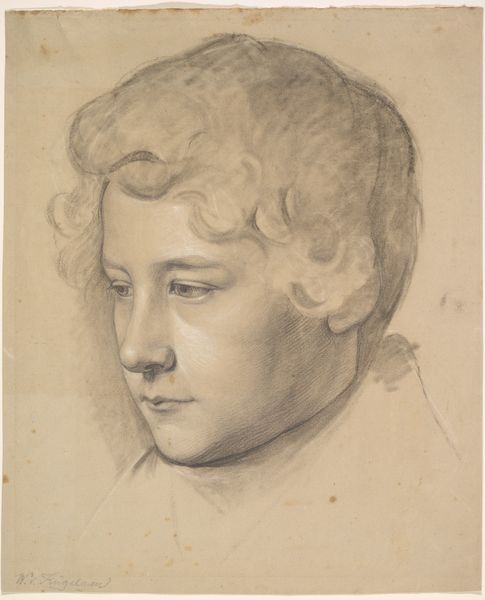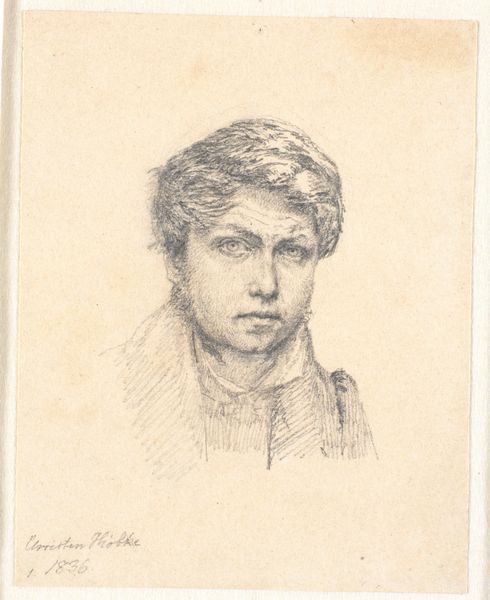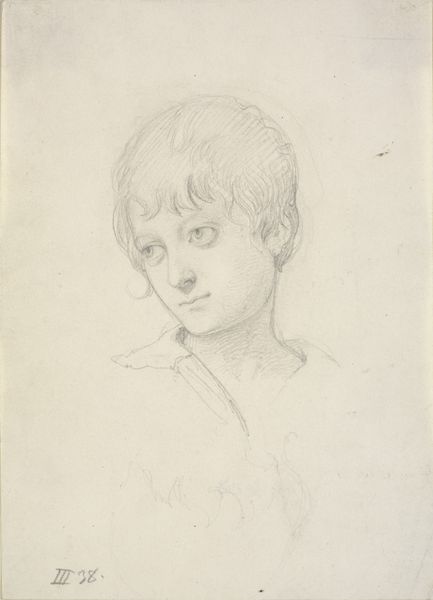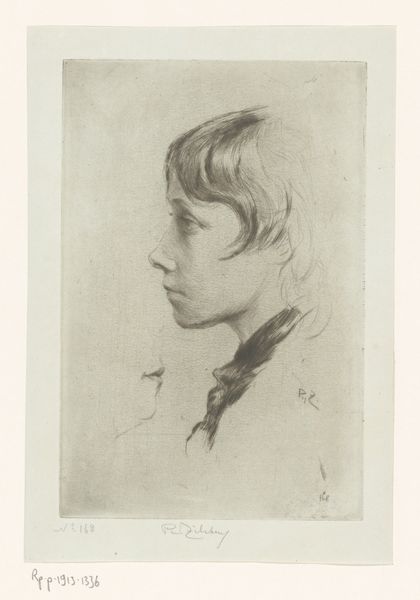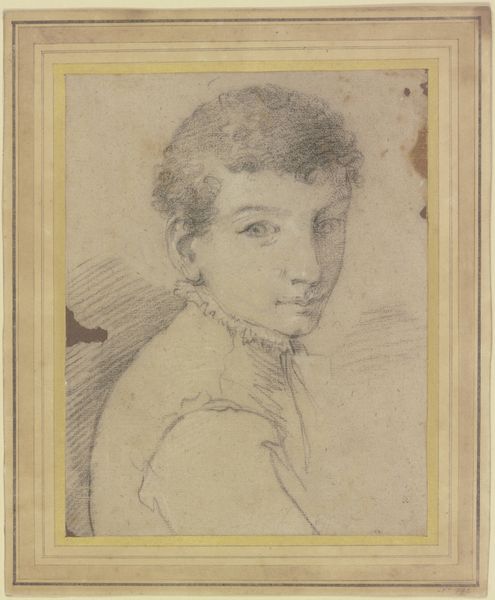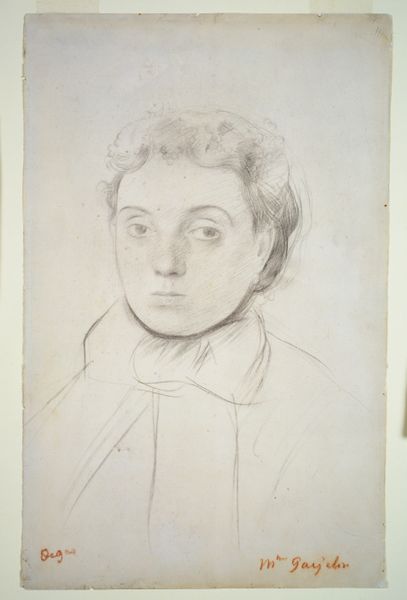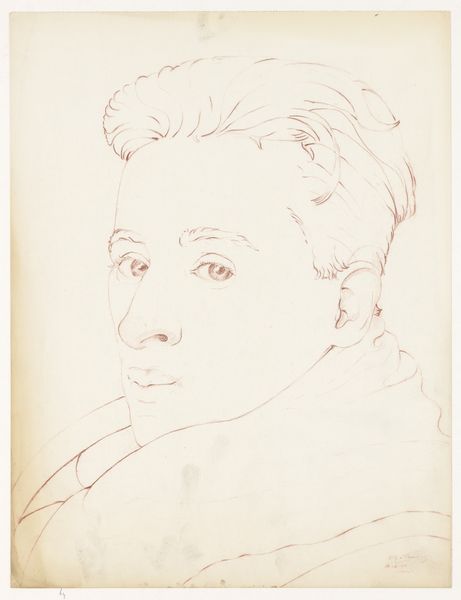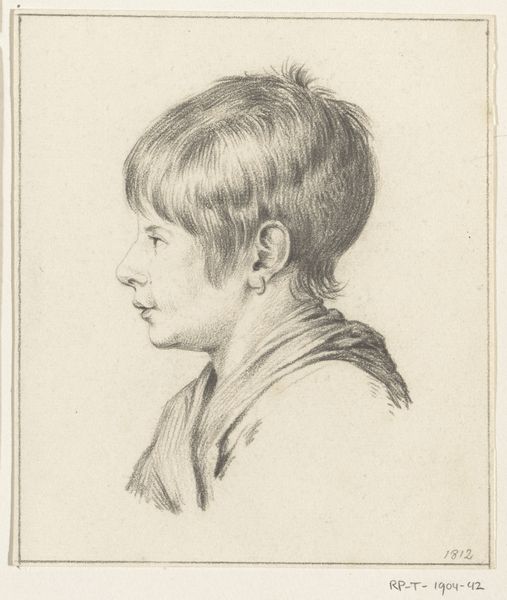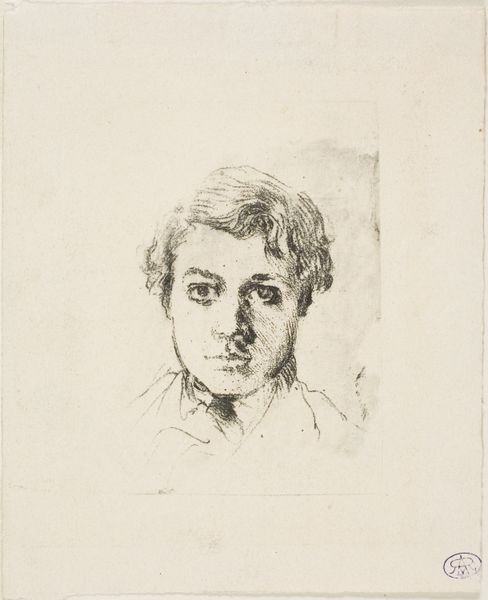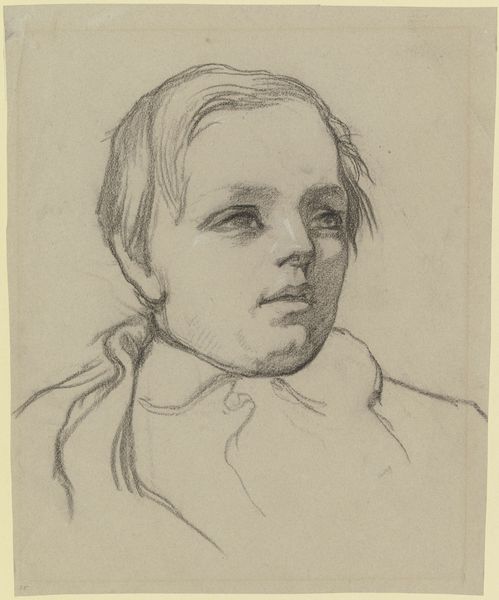
Bildnis des Bruders des Künstlers, Carl Hoff, als Knabe von dreizehn Jahren 1820
0:00
0:00
drawing, pencil
#
portrait
#
drawing
#
caricature
#
pencil drawing
#
romanticism
#
pencil
#
portrait drawing
#
realism
Copyright: Public Domain
Curator: Good morning. We are standing before Nikolaus Hoff's sensitive pencil drawing, "Bildnis des Bruders des Künstlers, Carl Hoff, als Knabe von dreizehn Jahren," or, Portrait of the Artist’s Brother, Carl Hoff, as a Boy of Thirteen Years, created in 1820. Editor: The gentleness of the light pencil on this slightly discolored paper makes the image appear intimate and dreamlike. The soft edges of Carl’s features and hair contribute to the image’s fleeting quality—a memory of fleeting youth itself. Curator: Notice the technical facility of Hoff's cross-hatching to create depth, particularly in the treatment of light and shadow on Carl's face and hair. His ability to capture texture using such limited means is quite impressive. Editor: Beyond pure technique, consider the context: A portrait of a boy, poised on the cusp of adulthood, rendered during a time of significant social upheaval across Europe. His androgynous presentation—the flowing hair and soft features—destabilizes traditional masculine portrayals and can open discussion around gender and identity during that period. How did social norms affect identity for non-ruling-class men like him? Curator: While sociopolitical readings are valid, focusing solely on those aspects risks obscuring the nuanced formal aspects of this image. His sidelong glance and barely-there, neutral mouth gives nothing away about the relationship or intention—and even resists assigning too much internal meaning to Hoff’s choices. I feel this elusiveness enhances the image's aesthetic complexity, inviting interpretation on the part of the viewer without imposing a single narrative. Editor: Perhaps, but let's not detach art from life; Nikolaus Hoff surely meant for his drawing to connect to the boy Carl, and viewers from that era would probably recognize, and sympathize with, those connections. As Carl navigates societal expectations, Hoff, as his brother and the artist, is an accomplice, and in 2024 we, too, can acknowledge both. Curator: Indeed. This close reading yields, ultimately, to diverse understandings of Hoff’s creation. Editor: I leave our listeners hoping the artwork fosters many dialogues between form and context—past and present.
Comments
No comments
Be the first to comment and join the conversation on the ultimate creative platform.
